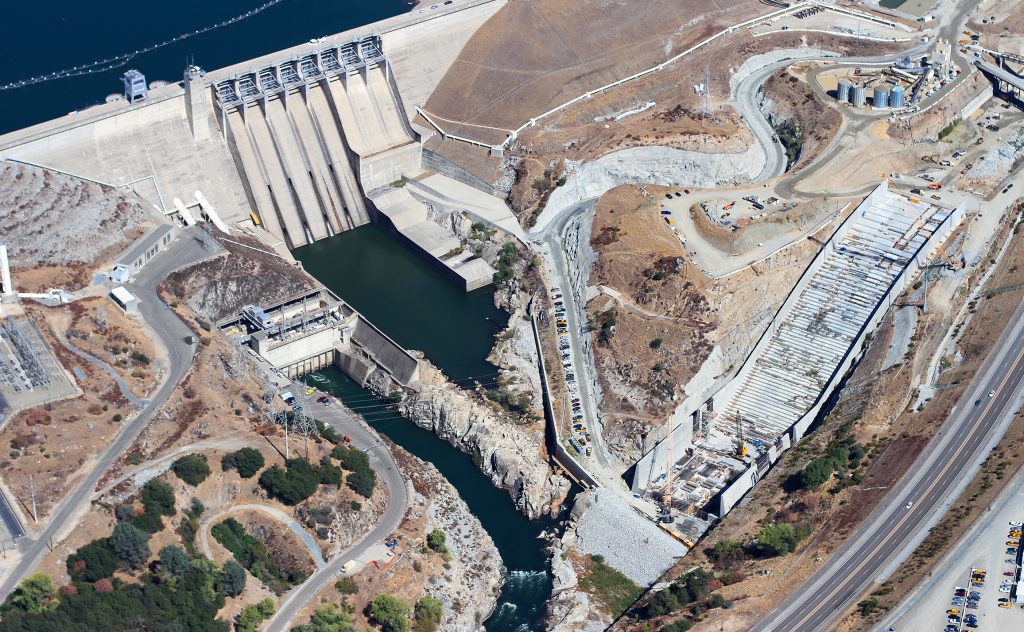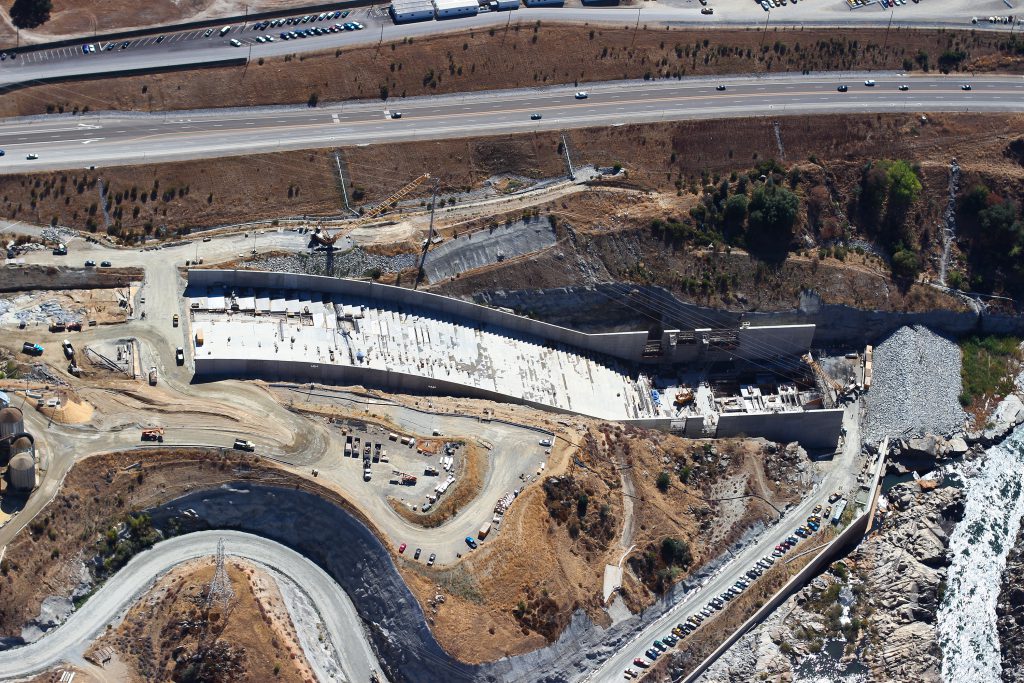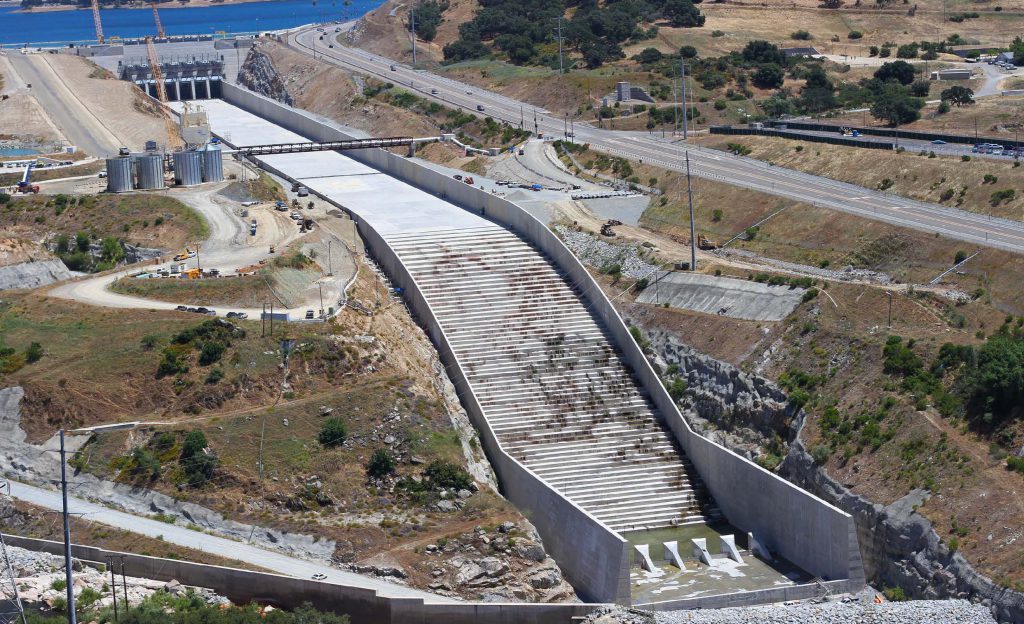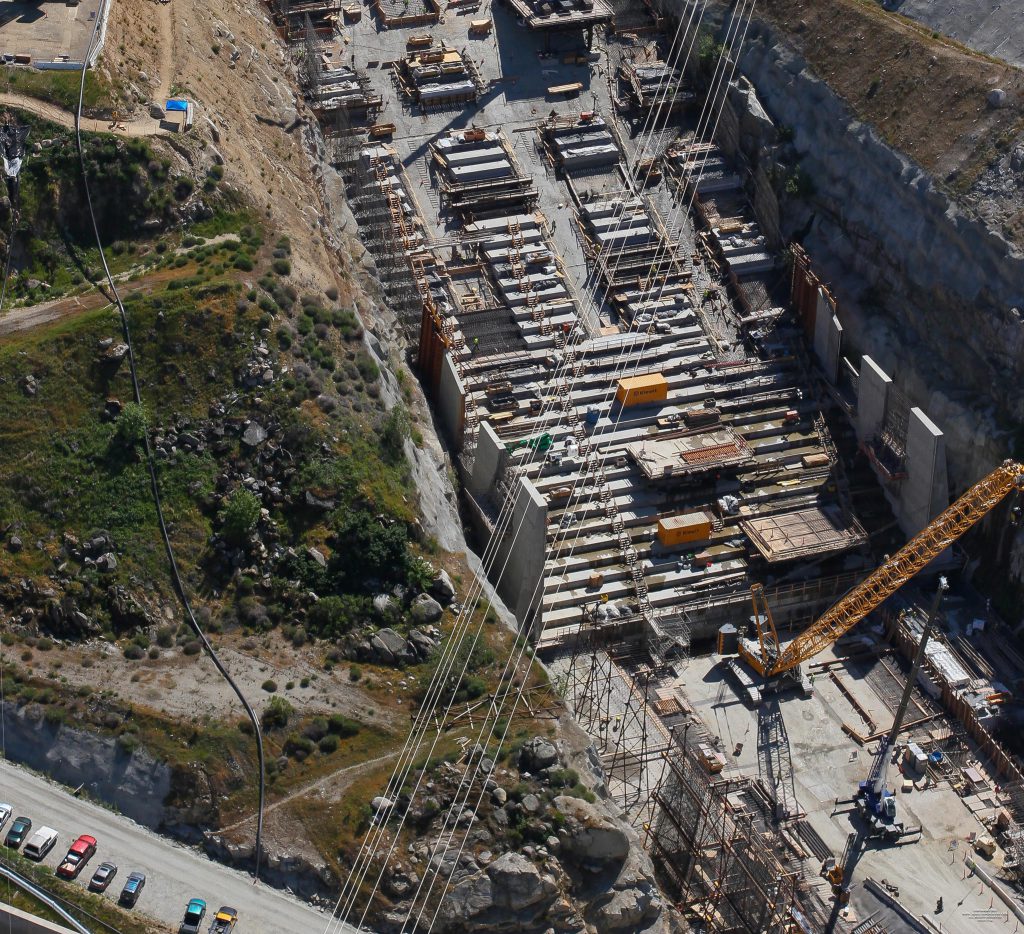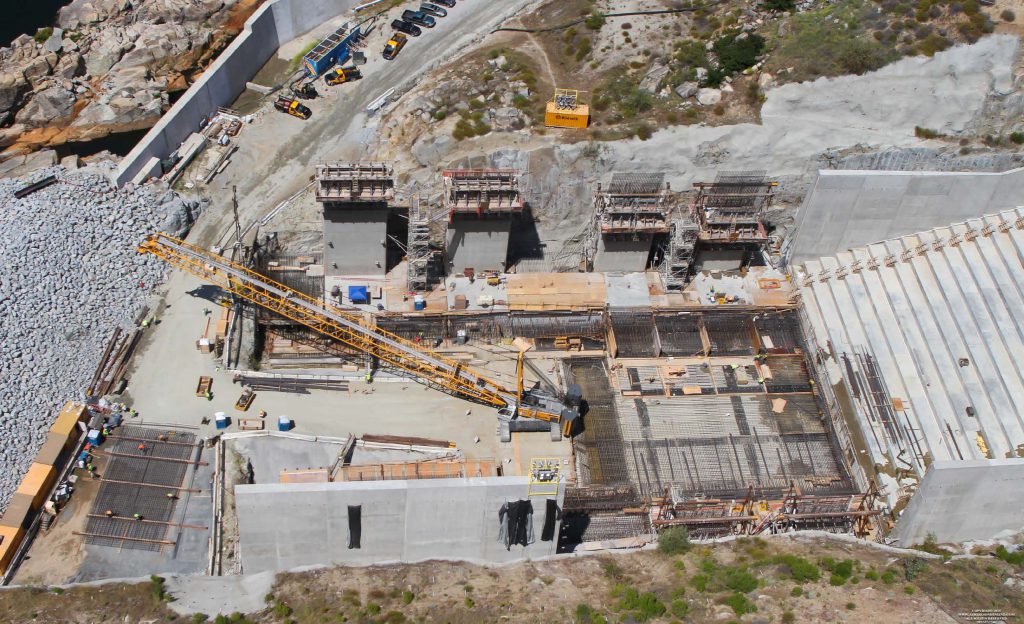Folsom Dam Auxiliary Spillway Phase IV helps protect Sacramento area
Since 1955, Folsom Dam — and the namesake lake it created — have been part of the landscape for residents of California’s Central Valley.
Located about 25 miles northeast of the state capital of Sacramento in the Sierra Nevada foothills, the concrete dam sits where the north and south forks of the American River meet.
Folsom Dam was built by the U.S. Army Corps of Engineers (USACE); its day-to-day operations are handled by the U.S. Bureau of Reclamation.
Visitors to Folsom Lake State Recreation Area come to hike, bike, picnic, camp, fish and boat. Even more people in the area benefit from the electrical power the dam generates and the water it stores for domestic use and irrigation.
But the primary function of Folsom Dam is flood control. Rain and snowmelt from the Sierras have a direct, and sometimes dramatic, impact on lake levels. Over the years, the dam has helped save the Sacramento area from major flooding, according to the California Department of Parks and Recreation.
In December 1964, a storm unleashed a record 280,000 cubic feet per second into Folsom Lake — challenging the dam with a river release of 15,000 cubic feet per second over what the downriver levee was designed to handle.
Years later, in 1986, there were similar conditions when a storm dumped nearly a foot of rain on Sacramento in 11 days, which led to a levee break that caused flooding in nearby Yuba County. Still, the dam prevented an estimated $4.7 billion in further flood damage.
A $900M authorized project
Even during the current drought, when opening the gates to release rising water may not always be needed, Folsom Dam is crucial to the safety of the community.
In 2005, USACE and the Bureau of Reclamation came together to craft a plan to protect the area for a 200-year-storm event.
It marked the first time the two federal agencies partnered in this way, participating in what would officially be named the Folsom Dam Joint Federal Project (JFP).
Their proposal: a $900 million effort that included six new dam gates and an auxiliary spillway to work in tandem with the existing dam.
The new structure, with its gates positioned 50 feet lower than the original dam, would allow water from Folsom Lake to be released earlier and more quickly — better controlling flow to the American River and making more room for runoff in the lake.
A focus on collaboration and compromise
Kiewit was part of the approved project from its first phase, winning a total of five contracts over the next decade.
The most recent contract, the Folsom Dam Auxiliary Spillway Phase IV project — or simply, Folsom IV — began in July 2013.
Work in this final phase involves site excavation, construction of a 1,100-foot approach channel, a stepped 3,027-foot spillway and a stilling basin.
While the project takes place in a footprint three-quarters-of a-mile long — one that Project Manager Luis Paiz likens to working on a postage stamp — it’s also a job with multiple scopes.
It includes more than one million yards of earthwork, over 186,000 cubic yards of concrete in 600 separate pours, and over 170,000 cubic yards of material dredged from the water.
Add to that the fact that when Kiewit was scheduled to start on the job, another contractor was already at work in the same space. The two companies would have to share staging areas and access to the job site for 23 months.
That combination of circumstances poses a formidable challenge. But early on, Kiewit focused on collaboration and compromise.
“Bringing solutions to the table, having a good attitude and resolving issues proactively set the tone in the early stages of the project,” said Paiz. “That set us up with a really good start in creating a trusting relationship with the Corps.”
Kiewit offers innovative solutions
“One of the first things Kiewit did when they came on-site was to help coordinate staging and access areas, walking the site with the USACE team to pick out locations,” said Katie Charan, JFP senior project manager, USACE — Sacramento District.
“We worked out a plan through Kiewit and the other contractor so we could have everything co-located on the site and nobody had to do any staging off-site. They were very valuable in the effort and in understanding the space we had to work within.”
To ease congestion on the job site and create a second point of access, Kiewit built a temporary trestle bridge. The structure helped facilitate the high volume of traffic coming into the job site, especially from concrete, aggregate and cement deliveries needed for the batch plant.
Similarly, when it came to deciding where to locate the batch plant to make concrete, space was a main consideration.
The Kiewit team proposed an innovative vertical batch plant to work within the limited footprint. This meant positioning the plant in an area that would eliminate all batch-plant operations and deliveries from interfering with the other contractor’s operations.
’A collaborative working effort’
The concrete work, performed between March 2014 and May 2016, came with other challenges. Among them were how to share equipment resources between concrete pours, rebar and formwork operations and still complete the 600 pours in the timeframe needed.
Kiewit’s solution involved pouring the vast majority of the concrete at night, which allowed the same equipment to be shared among pour, formwork and rebar crews. Pouring during the evening also helped control the temperature of the concrete mix.
Different concrete mixes were used for many of the pours, said Paiz.
“Coordinating that piece of the project was very complex. The batch plant had to produce several mixtures at one time and send them to different locations. Batching the different mixes at once and making sure they were going to the correct locations at the right time and with the necessary truck delivery spacing for each pour required a high level of planning, communication and quality controls.”
Innovative solutions like the trestle bridge and the batch plant are examples of how effectively Kiewit has communicated and resolved issues with the Corps, not simply as a contractor but as a partner.
“With Kiewit, it’s more like a collaborative working effort,” Charan said. “Any time they’ve had a problem or issue, they’ve been more than willing to come back and talk with us to find a solution.”
“That helps make the process quicker and more efficient,” she added. “That way, we don’t cause delays on Kiewit’s side and we can also expedite those innovative ideas they came up with.”
Step chute: Dropping water over 160 feet in elevation, the structure is stepped to help dissipate the energy of the water coming downhill. A special concrete mix is used to prevent scouring and erosion.
Teamwork is a big reason
As Kiewit nears completion of Folsom IV, the team is especially proud of finishing ahead of schedule — this despite major hurdles that threatened to delay the project by up to 12 months.
“Teamwork really is the reason the job is finishing early. It’s not because everything was a piece of cake,” said Todd Orbus, Kiewit area manager.
“It’s because when those issues rose up, the job team — Kiewit and USACE — figured out innovative and timely solutions to keep the project on track. In my career it’s been the best collaboration between client and contractor that I’ve been associated with.”
Paiz says the team also had the ability to keep an eye on the big picture.
“There was the right tone on the project from the beginning. Every day, the team made a point to resolve issues in the field as quickly as possible and with the involvement of USACE. Everyone understood the ultimate goal and recognized of the mission of the project, and how they could do their part in making the project a success.”
